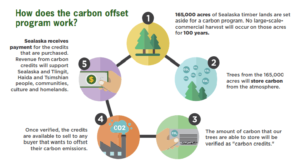How Do Carbon Credits Work?
Carbon Credits Work
Carbon credits are a monetary incentive for companies to reduce their greenhouse gas emissions. A business can offset their emissions by purchasing carbon credits from other businesses or by doing their own part. Using carbon credits in conjunction with a comprehensive decarbonization plan is a good way to help achieve the goal of a sustainable future.
carbon.credit can be issued by either a third party or an accredited project. This is done to verify that the reductions are based on verified initiatives. These can include projects that deal with impacts beyond the value chain, such as waste handling or local community development.

Companies may buy and sell carbon credits, both on voluntary markets and mandatory cap-and-trade markets. The market has been designed to encourage fossil fuel energy users to shift to less-polluting sources of energy. In order to participate in the market, companies must be able to quantify their carbon footprint and demonstrate how they will reduce their emissions. However, this does not necessarily mean that all businesses should engage in reducing their carbon emissions.
How Do Carbon Credits Work?
When a company emits CO2, it gets a certain number of “carbon credits”. As the supply of carbon credits declines, the price of CO2 increases. Since the value of a carbon credit is based on the price of one tonne of CO2, companies that have fewer credits can sell those to companies with more.
Some companies go even further by using carbon credits to offset their remaining emissions. While these are useful in some cases, they also have critics. For example, in some cases, it’s more economical to pay a fine instead of purchasing carbon credits. Other critics argue that carbon credits enable large polluters to continue generating the same amount of emissions, thus creating a false sense of progress.
In the US, there are no national carbon credit markets. However, state governments have created cap-and-trade programs. Emitters in the US are required to meet strict limits on their CO2 emissions. If a company reaches these limits, it can save its emissions for future years.
Several countries have publically pledged to reduce their greenhouse gas emissions. The Kyoto Protocol divides countries into two groups according to their economy. Developing nations are addressed by the Clean Development Mechanism (CDM). The CDM issues carbon credits to projects that contribute to sustainable development efforts in developing nations.
The carbon credits market is controversial. While some critics claim that the system allows big polluters to greenwash their operations, proponents believe that the system generates measurable emissions reductions. They also argue that the economics of the carbon credit market are beneficial to the environment, because they create a market for trading greenhouse gas emission permits.
In addition to the CDM, other projects are working to create a sustainable future. These projects include nature-based solutions, or Natural Climate Solutions. Nature-based solutions use a variety of tactics to address climate change, such as protecting forests and peat bogs. It is important to remember that these are just one solution to the problem of climate change, and that it is crucial to protect the natural processes that keep our planet’s atmosphere in balance.